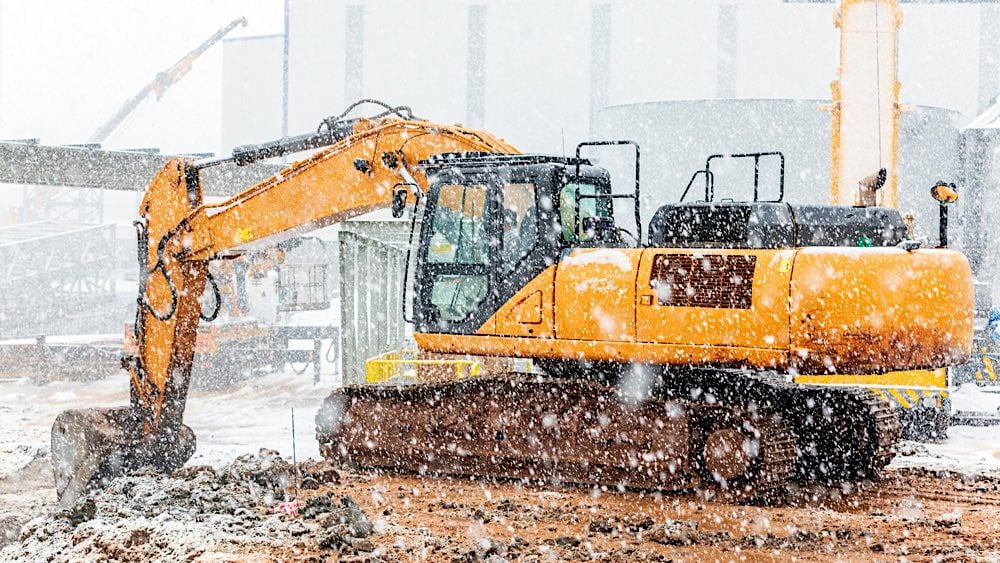 We’ve said it before, but it bears repeating: If you want to lower Contractor Insurance costs, create safer job sites. One simple way to create safer job sites is to supplement formal training with regular toolbox talks.
We’ve said it before, but it bears repeating: If you want to lower Contractor Insurance costs, create safer job sites. One simple way to create safer job sites is to supplement formal training with regular toolbox talks.
According to Harvard, a toolbox talk is “an informal group discussion among employees of an individual department that focuses on a particular safety issue.” Although toolbox talks should never be used as a substitute for formal on-site and compliance training, they are a great way to refresh workers’ safety knowledge and to keep safety at the top of their minds since more formal training is typically held once a year or less.
And guess what; toolbox talks work! According to the Associated Builders and Contractors (ABC), companies that conduct daily toolbox talks reduce their total recordable incident rate (TRIR) by 78% and their days away, restricted, or transferred (DART) rates by 76% when compared to companies that hold them monthly.
However, to be effective, toolbox talks can’t be stale or boring. They need to be relevant and engage workers.
15 Tips for Effective Toolbox Talks
- A senior or experienced member of the team should lead toolbox talks.
- Toolbox talks are best held at the beginning of the workday, so the day starts off with a focus on safety.
- Toolbox talks should be held frequently – daily or weekly - to maximize effectiveness.
- Toolbox talks should be short – typically 10 to 15 minutes or 30 minutes max.
- Topics should be on a single health or safety topic.
- Topics should be relevant. For example, if it’s a frigid day, you may want to cover winter safety tips.
- Try to keep the conversation positive and focus on being proactive and preventing injuries rather than reacting to a past incident. Workers are more likely to listen to the information if they don’t feel like they are being lectured or reprimanded.
- Prepare your talk. You only have a few minutes to deliver critical information, so you need to understand the topic and know how you will pass the information on to workers.
- Before presenting the toolbox talk, think about how to make it more compelling and memorable, such as a video, a surprising statistic, an interesting fact, or a demonstration.
- Keep it simple. Don’t use big words or industry jargon.
- Connect with participants by making eye contact and speaking loud enough so everyone can hear you.
- Engage your workers by asking questions such as “Has anybody noticed this problem?” or “Has anyone faced this challenge in the past?”
- Ensure that everyone understands. Ask questions about what you just covered, or ask someone to summarize what they’ve heard.
- Use videos, PDFs, and handouts when appropriate.
- Keep records of toolbox talks. Although it isn’t legally required, recording the topic and who was there can help track what you have and haven’t covered.
Toolbox Topic Examples
The possibility for toolbox topics is endless; just make sure the topic can be covered sufficiently in the time allotted and that it is relevant to your workers. Here are a few examples:
- Rooftop Safety
- Preventing Struck-By Accidents
- Respiratory Protection
- Dangers of Benzene
- Mental Health
- Circular Saw Safety
- Using the Right Tool for the Job
- Heavy Equipment Safety
- Safe Lifting
- Common Construction Site Hazards
- Minimizing the Risk of Sprains and Strains
- Hand and Power Tool Safety
- Proper PPE
- Construction Worksite First Aid
- Avoiding Traumatic Brain Injuries
How to Save Even More on Contractor Insurance
Unlike many agencies that sell only one insurance brand, as a Trusted Choice independent insurance agency, agents at the American Insuring Group compare the cost of your insurance coverage with several brands to ensure you’re getting the best deal.
We do exhaustive research for you, so you can rest assured that you will get a great value for your insurance dollar! Call us today at (800) 947-1270 or (610) 775-3848, or connect with us online.



 What would you say if we told you that a task that typically takes ten to fifteen minutes at a minimal cost to you could reduce the number of worksite injuries, improve employee morale, and lower the cost of
What would you say if we told you that a task that typically takes ten to fifteen minutes at a minimal cost to you could reduce the number of worksite injuries, improve employee morale, and lower the cost of  The construction industry is filled with hazards that can result in injuries or death and increase
The construction industry is filled with hazards that can result in injuries or death and increase  If you want to lower the cost of
If you want to lower the cost of  Complying with OSHA’s Respiratory Protection Standard will help keep workers safe, help you avoid fines, and lower
Complying with OSHA’s Respiratory Protection Standard will help keep workers safe, help you avoid fines, and lower  To lower
To lower  Creating a safer worksite is every employer's responsibility and one of the best ways to save on
Creating a safer worksite is every employer's responsibility and one of the best ways to save on  The right
The right  The right
The right  Reducing worksite hazards can help save
Reducing worksite hazards can help save 



